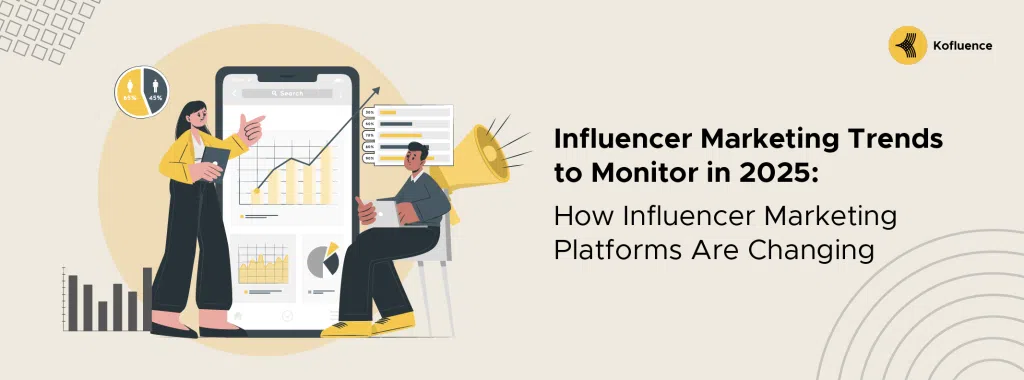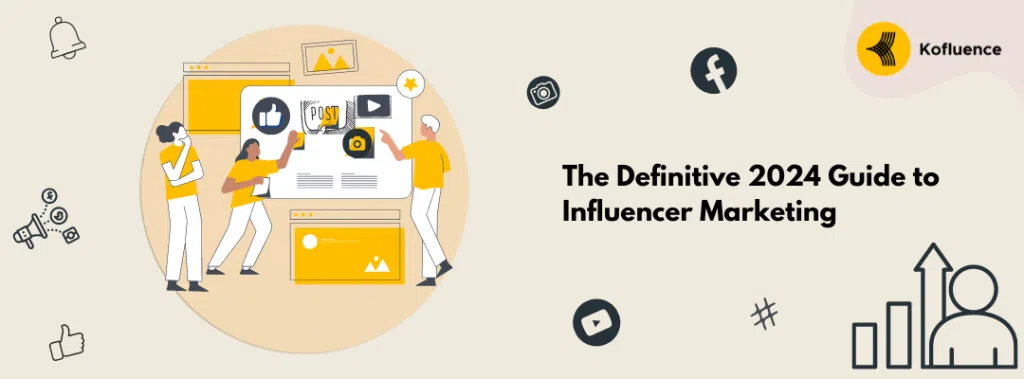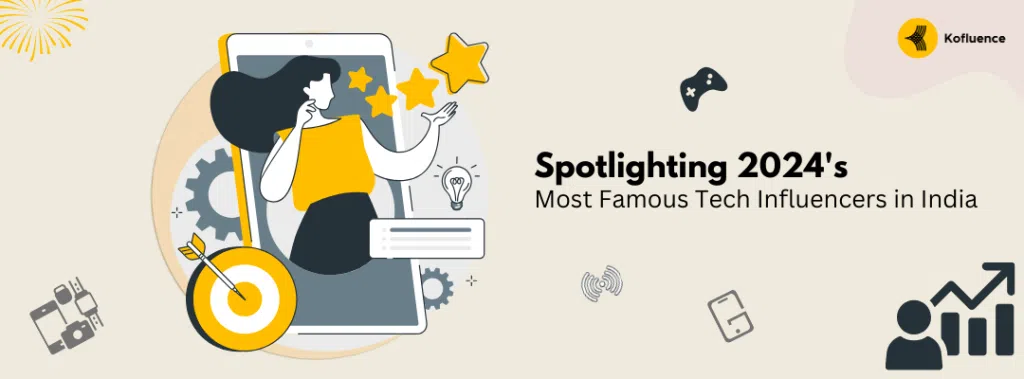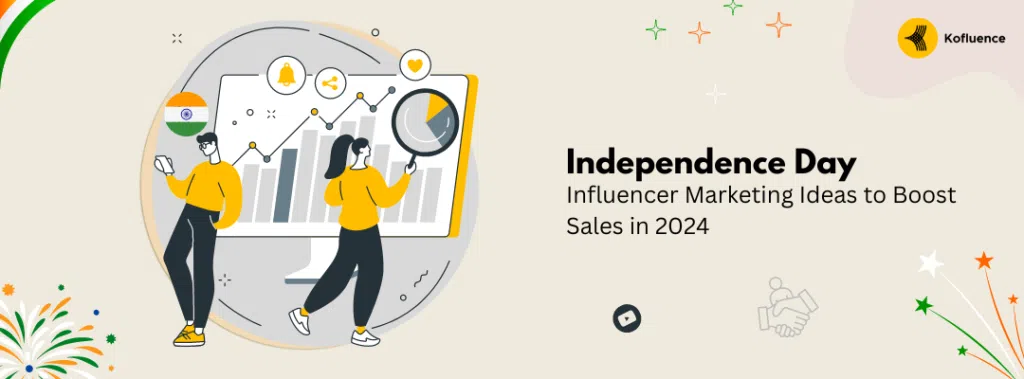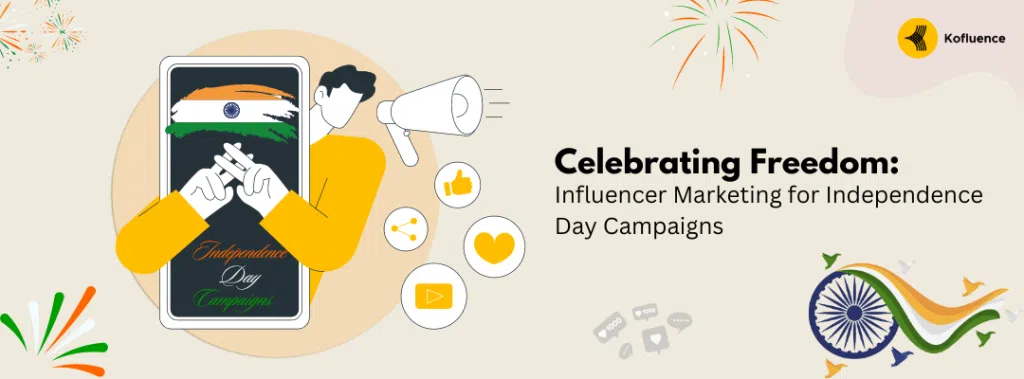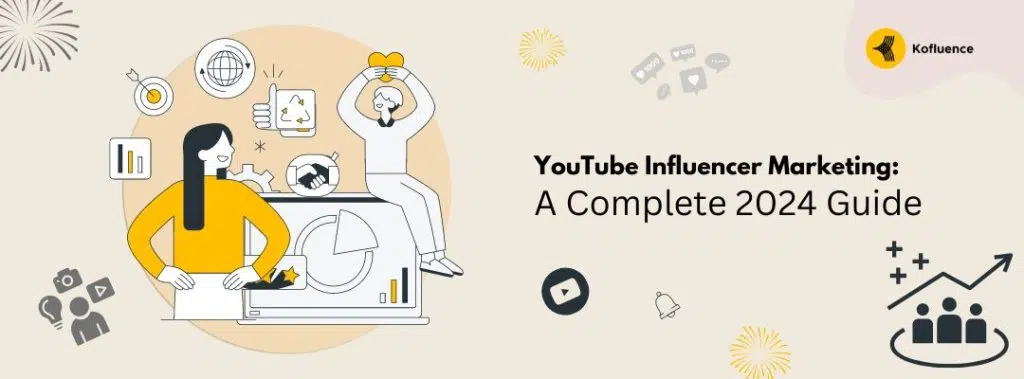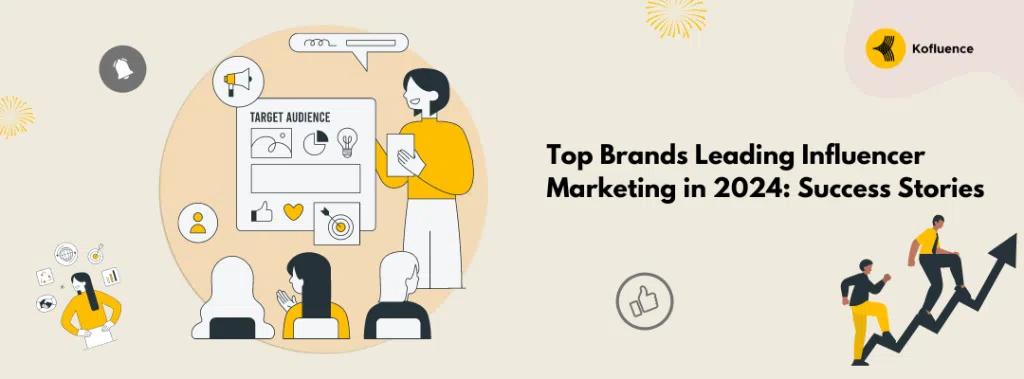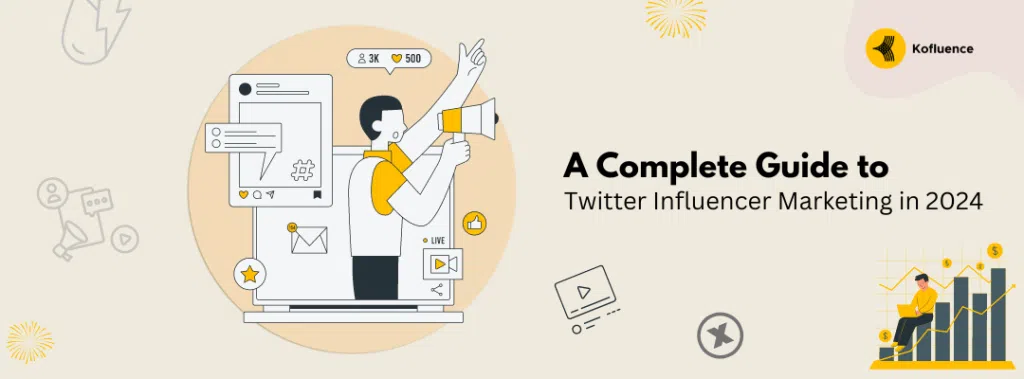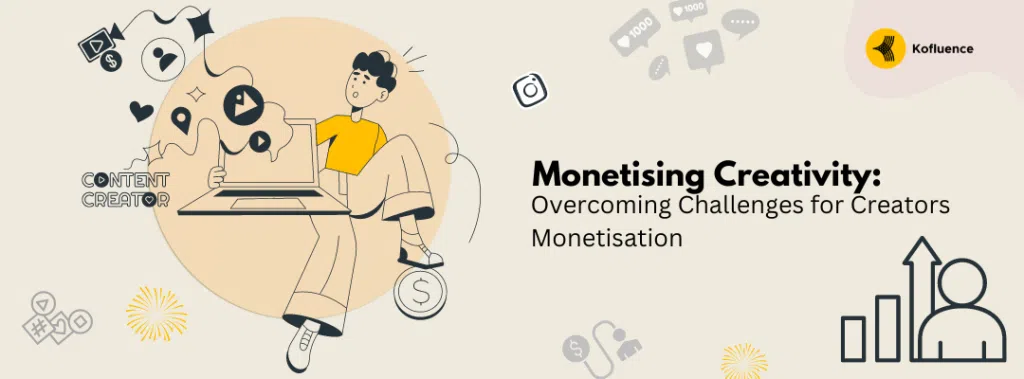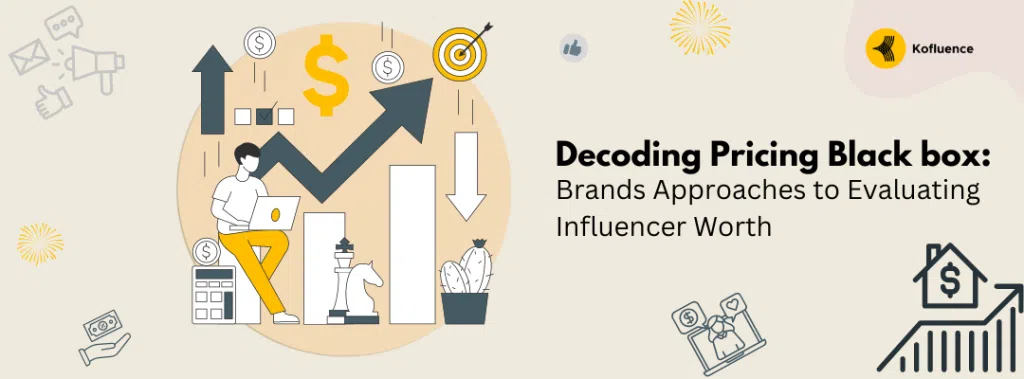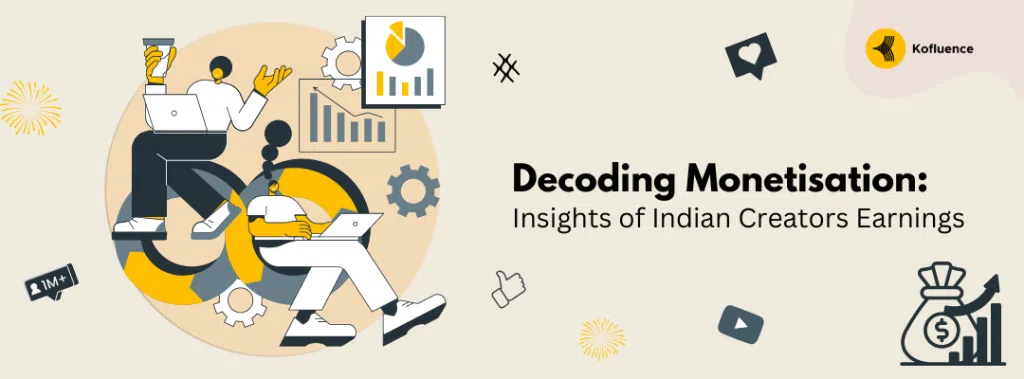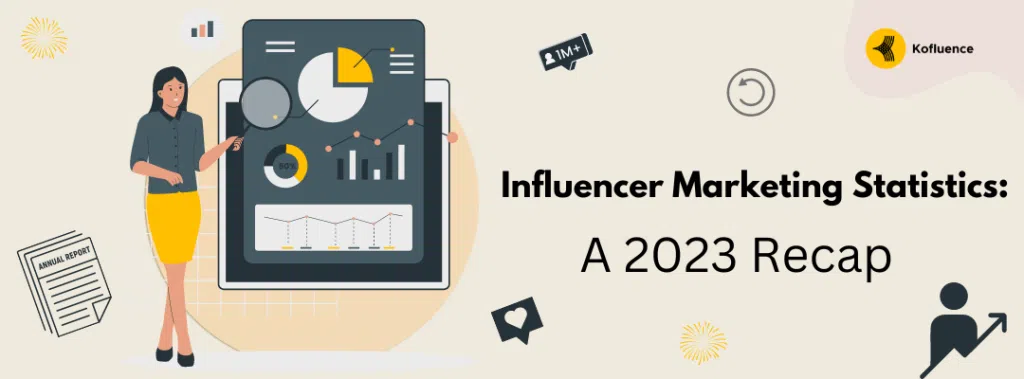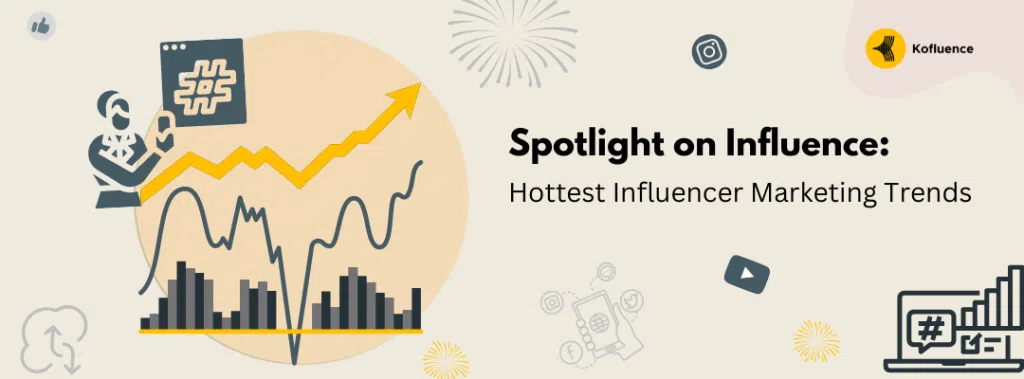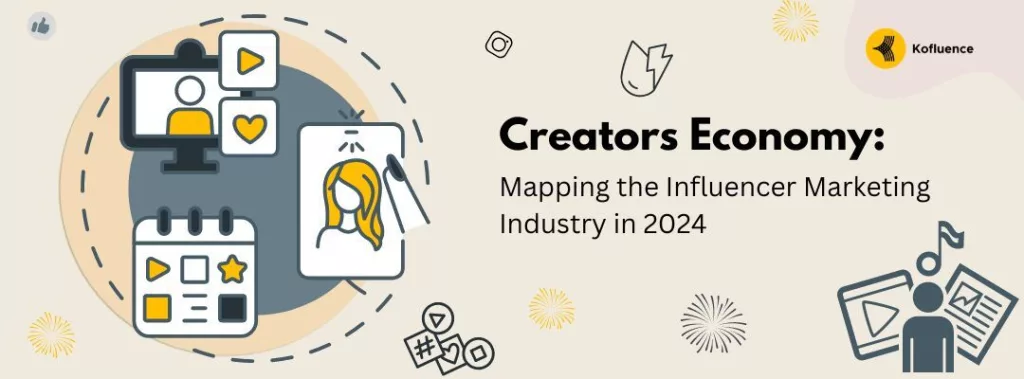Listen to Audio Blog
Table of contents:
Understanding YouTube Content Creators as the Dynamic Force in Influencer Marketing
Statistics Revealing the Growing Popularity of YouTube Content Creators
The Pros and Cons of Using YouTube Content Creators in Influencer Marketing
How Kofluence Can Help Brands Up Their Influencer Marketing Game Using YouTube Content Creators
Best Practices for Brands to Collaborate with YouTube Content Creators in Influencer Marketing
Introduction
We live in a world where people are bombarded with advertisements and promotions on a daily basis. And let’s be honest, we’re getting really good at ignoring them. So how do brands break through the noise and reach their target audience? Enter influencer marketing. Influencer marketing is the process of partnering with individuals who have a large social media following to promote a brand or product. This type of marketing has been around for decades, with celebrities being the original influencers. However, in recent years, there has been a shift towards using social media personalities as influencers instead. And one platform that has seen a surge in influencer marketing is YouTube.
YouTube content creators are individuals who create videos and upload them to YouTube’s platform. They range from beauty gurus to gamers to comedians and everything in between. These content creators have amassed millions of subscribers, the majority of which are individuals between the ages of 18-34. And with such a large and engaged audience, it’s no wonder that brands are keen to partner with them for influencer marketing. The rise of YouTube content creators as a dynamic force in influencer marketing has been due to a number of factors.
Firstly, the shift in consumer behavior towards online content consumption. Secondly, the perceived authenticity and trust that influencers have with their audience. And finally, the boom in social media usage and the subsequent rise of influencer marketing. In summary, influencer marketing has come a long way since its inception, with YouTube content creators helping shape the landscape and dominate the space. It’s clear that partnering with the right YouTube content creator can result in a successful influencer campaign. But how do brands ensure they’re partnering with the right creator? We’ll explore this in more detail in the following sections.
Understanding YouTube Content Creators as the Dynamic Force in Influencer Marketing
When it comes to influencer marketing, YouTube content creators are a force to be reckoned with. But who are these creators, and why are they so important in the marketing landscape? YouTube content creators come from all walks of life, but they all share one thing in common: they create video content for the platform. This can range from makeup tutorials to gaming videos to vlogs about everyday life. Some of these creators have amassed millions of subscribers, making them incredibly influential in the eyes of their viewers. Why are these creators so important in influencer marketing? For one, their audiences are incredibly engaged. Unlike more traditional forms of advertising, YouTube content creators have cultivated communities of loyal fans who are eager to hear their recommendations.
Brands can tap into this audience and benefit from the trust that has been established between the creator and their viewers. But it’s not just about reach and engagement – YouTube content creators have also changed the influencer marketing landscape in more fundamental ways. For one, they’ve democratized the space, allowing anyone to become an influencer as long as they have something interesting to say or share. This opens up opportunities for more diverse voices to be heard.
Additionally, YouTube content creators have also shifted the focus away from traditional celebrity influencers. Instead of relying on famous names to sell products, brands can partner with everyday people who are relatable and trustworthy. This shift towards authenticity has been a game-changer in influencer marketing. All of these factors make YouTube content creators a dynamic force in the world of influencer marketing. As we’ll see in the next section, the statistics back this up.
Statistics Revealing the Growing Popularity of YouTube Content Creators
If you’ve been in the marketing game long enough, you know that influencer marketing is not a new concept. Companies have been partnering with celebrities and public figures for years to promote their products and services. However, with the rise of social media, influencer marketing has taken on a new life. YouTube content creators, otherwise known as YouTubers, have become a force to be reckoned with in the world of influencer marketing. These individuals create content for their subscribers, ranging from makeup tutorials to gaming videos to travel vlogs. YouTubers have built their brands by virtue of their personality, expertise, and their ability to connect with their audience on a personal level. In the past few years, the number of brands collaborating with YouTubers has skyrocketed, and for good reason.
Current trends in influencer marketing and YouTube content creators show that YouTubers are highly effective at influencing purchase decisions. According to a survey conducted by Google, 70% of teenage subscribers say they relate to YouTubers more than traditional celebrities. In a separate study, 60% of millennials reported that they would try a product recommended by a YouTuber. Looking toward the future, predictions for influencer marketing and YouTube content creators suggest that the industry will only continue to grow. In fact, it’s estimated that by the end of 2023, the influencer marketing industry will reach a record 21.1 billion U.S. dollars. Additionally, with the rise of Gen Z, who spends more time on YouTube than any other social platform, partnering with YouTubers will become an even more crucial component of any successful marketing strategy.
In summary, YouTube content creators have become a dynamic force in influencer marketing due to their ability to connect with their audience on a personal level and influence purchase decisions. With historical data, current trends, and future predictions showing the increasing importance of YouTubers in the marketing world, it’s clear that partnering with these creators is a strategic move for brands looking to up their game.
The Pros and Cons of Using YouTube Content Creators in Influencer Marketing
Ah, YouTube content creators – the ones that make you laugh, cry, and wonder how they came up with such creative ideas. And now, they’re being recognized as the dynamic force in influencer marketing. But, before jumping on the bandwagon, let’s take a look at the pros and cons of partnering with them.
Pros:
Huge reach: Some YouTube content creators have millions of subscribers, which opens doors to a larger audience for your brand.
Targeted audience: Based on the creator’s niche, you can tap into a specific audience segment that fits your brand’s target market.
Authenticity: Most content creators have loyal viewers who trust their opinions and recommendations, leading to an authentic connection with your brand.
Cost-effective: Compared to traditional advertising, influencer marketing can be a more cost-effective way to spread brand awareness.
Cons:
Risk of misrepresentation: With influencer marketing, there’s always a risk that the content creator may misrepresent your brand or not comply with your guidelines.
Limited control: Content creators have a unique creative process that may be difficult to control, which can lead to the brand’s message being lost.
Short-lived impact: The impression left by a specific influencer may be short-lived, causing the brand’s messaging to not have a lasting impact.
So, how can you mitigate the risks of partnering with YouTube content creators?
Due diligence: Before partnering, do thorough research on the content creator’s past collaborations and content to ensure they align with your brand’s values and goals.
Clear guidelines: Establish clear guidelines and expectations for the partnership and ensure they’re agreed upon by both parties.
Transparency: Be transparent with the content creator on your goals and the messaging you want to convey to maintain brand authenticity.
Overall, partnering with YouTube content creators in influencer marketing can be a great way to reach a targeted audience and increase brand awareness. But, it’s important to weigh the pros and cons and take necessary precautions to ensure a successful partnership that aligns with your brand’s goals.
What are some common challenges faced by brands when working with YouTube content creators for influencer marketing?
In recent years, YouTube has become a powerful platform for brands to collaborate with content creators and leverage influencer marketing. However, working with YouTube content creators can present its own set of challenges for brands. In this blog post, we will explore some of the common hurdles that brands often encounter when partnering with YouTube influencers and provide insights on how to overcome them.
Ensuring Brand Alignment:
One of the primary challenges brands face when working with YouTube content creators is ensuring brand alignment. It is crucial for brands to find influencers whose content aligns with their values, target audience, and overall brand image. Failure to establish this alignment can lead to inconsistencies in messaging and a mismatch between the brand and the influencer’s audience, which can dilute the brand’s message and impact.
Solution: Thoroughly research and vet potential YouTube influencers before entering into partnerships. Analyze their content, engagement metrics, audience demographics, and previous brand collaborations to ensure a strong alignment with your brand’s objectives and values.
Maintaining Authenticity:
Authenticity is key in influencer marketing, and brands often face the challenge of maintaining it when working with YouTube content creators. Brands need to strike a balance between their marketing goals and the content creator’s unique voice and style. Pushing too much brand messaging or script can make the content seem forced and inauthentic, which can lead to a negative response from the audience.
Solution: Give content creators creative freedom within the agreed-upon brand guidelines. Provide them with a clear understanding of your brand’s message, objectives, and key points, but allow them to incorporate their personal touch and style into the content. This approach helps maintain authenticity and ensures the content resonates with the influencer’s audience.
Measuring ROI and Effectiveness:
Measuring return on investment (ROI) and the effectiveness of influencer marketing campaigns can be a challenge for brands. YouTube content creators often have substantial audiences, but translating that reach into tangible business outcomes can be complex. Brands need to track metrics such as engagement, conversions, and brand sentiment to gauge the success of their collaborations.
Solution: Establish clear campaign objectives and key performance indicators (KPIs) before partnering with YouTube influencers. Implement tracking mechanisms to measure the impact of the influencer’s content on audience behavior and track conversions. Utilize unique URLs, coupon codes, or trackable links to attribute traffic and sales directly to the influencer’s efforts.
Dealing with Brand Safety Concerns:
Brand safety is a critical consideration for brands when partnering with YouTube content creators. YouTube’s vast content ecosystem includes a diverse range of creators, and there is always a risk of association with inappropriate or controversial content. Protecting the brand’s reputation and ensuring that the content aligns with the brand’s values is a significant challenge.
Solution: Implement thorough vetting and due diligence processes when selecting YouTube influencers. Review their content history, viewer comments, and past collaborations to ensure a safe environment for your brand. Additionally, establish clear guidelines and expectations regarding content appropriateness and conduct regular communication with the influencer to address any concerns promptly.
How Kofluence Can Help Brands Up Their Influencer Marketing Game Using YouTube Content Creators
By now, we have established that partnering with YouTube content creators has become a must-do for brands looking to make a real impact. But managing these collaborations can be tricky, which is where Kofluence comes in.
Overview of Kofluence’s Services
At Kofluence, we’re all about making influencer marketing smarter and easier for our clients. Our platform provides a one-stop shop for finding, vetting, and partnering with quality YouTube content creators across a range of niches and industries. Once brands have identified the right creators for their campaigns, they can manage all aspects of the partnership through our platform. This includes everything from tracking performance metrics to streamlining payment and contract processes.
Benefits of Using Kofluence to Partner with YouTube Content Creators
One of the major benefits of partnering with Kofluence is the ability to access a curated network of high-quality YouTube content creators. By pre-vetting creators for things like audience demographics, engagement rates, and brand safety concerns, we make it easy for brands to find collaborators who are a perfect match for their goals.
When it comes to finding the perfect YouTube content creators for your influencer marketing strategy, Kofluence Brands Dashboard offers a Creator Discovery option that simplifies the process. It provides a comprehensive toolset for brands to identify and connect with the right influencers. Additionally, the dashboard allows you to evaluate the quality and relevance of creators’ content by analyzing essential metrics like engagement rate, views, and subscribers.
What metrics or indicators should brands consider when evaluating the impact of YouTube content creators in their influencer marketing strategies?
When evaluating the impact of YouTube content creators in influencer marketing strategies, brands should consider a range of metrics and indicators. Here are some key ones to consider:
Reach: The reach metric quantifies the size of the content creator’s audience and indicates the potential exposure of the brand’s message. Metrics to consider include the number of subscribers, views per video, and average watch time. These numbers give an initial understanding of the influencer’s ability to reach and engage with their audience.
Engagement: Engagement metrics measure how actively the audience interacts with the content. Important indicators include likes, comments, shares, and video engagement rates. High levels of engagement demonstrate that the influencer’s content resonates with their audience, increasing the likelihood of the brand’s message being noticed and remembered.
Audience Demographics: Understanding the demographics of the influencer’s audience is crucial to ensure alignment with the brand’s target market. Metrics such as age, gender, location, and interests provide insights into whether the content creator’s audience matches the brand’s desired customer profile. Platforms like YouTube provide analytics that can help identify these demographics.
Brand Mentions and Tags: Monitoring the number of times the influencer mentions the brand or uses relevant tags in their videos helps assess the level of brand integration and exposure. This metric indicates the direct visibility and association of the brand with the content creator’s audience.
Conversions and Sales: Ultimately, brands want to see a return on their investment. Tracking conversions and sales generated from the influencer’s content is essential. Using unique URLs, coupon codes, or trackable links specific to the influencer’s campaign can help attribute sales directly to their efforts.
Sentiment Analysis: Analyzing the sentiment of comments and feedback from the audience can provide insights into the perception of the brand and the effectiveness of the influencer’s content. Positive sentiment indicates a strong brand connection, while negative sentiment may highlight areas for improvement or potential concerns.
Long-Term Impact: Evaluating the long-term impact of working with YouTube content creators involves considering metrics such as brand recall, brand loyalty, and ongoing engagement even after the campaign has ended. These indicators help determine if the influencer’s content had a lasting impact on the audience’s perception and behavior toward the brand.
Best Practices for Brands to Collaborate with YouTube Content Creators in Influencer Marketing
Identifying the right YouTube content creators to partner with is key to a successful influencer marketing campaign. Just having a large following does not necessarily mean that a content creator is the right fit for your brand. The key is to find creators whose goals align with your brand’s objectives and who share your values. With Kofluence Brands Dashboard, you can seamlessly search and filter creators based on specific criteria such as topics, demographics, and interests. This feature enables you to pinpoint creators whose goals and values align with your brand’s objectives. By utilizing this powerful tool, you can ensure that the creators you partner with have content that fits your brand’s niche, resonates with your target audience, and aligns with your marketing goals.
Setting clear goals and expectations is essential when working with YouTube content creators. Both parties must be on the same page on the objectives, deliverables, and timelines for the partnership. The creators you work with should have a clear understanding of your brand’s products or services. Brands should clearly communicate their expectations for the partnership, performance metrics, and what they can offer the creators in return. Creating win-win partnerships is crucial for long-term success. It would be best to collaborate with creators by offering value and mutual benefits.
Brands should respect the creators’ creativity, content, and, most importantly, their audience. Promoting trust and transparency is always valuable, as it enables both parties to foster long-lasting relationships. Also, brands must give creative freedom to the creator, as they know best about their audience and what content will resonate with them.
To sum up, by identifying the most suitable creators to partner with, setting clear expectations, and creating win-win partnerships, brands can run successful influencer marketing campaigns with YouTube content creators. It will take effort, patience, and investment to establish long-term profitable relationships with creators. However, if done correctly, these partnerships can bring substantial returns for brands in terms of brand image, leads, and revenue.
Conclusion
Congratulations! You have now understood how YouTube content creators have become an essential driving force in influencer marketing. We hope that this blog has helped you understand the significance of partnering with YouTube content creators. As we have seen, brands can use YouTube content creators to effectively reach their target audience, drive engagement and increase brand awareness. To make the most of your influencer marketing campaigns, it is important to identify the right YouTube content creators, set clear goals and expectations, and create win-win partnerships. Platforms like Kofluence can make this process even easier by providing brands with a one-stop shop for identifying, vetting, and partnering with the right YouTube content creators. So, what are you waiting for? Start leveraging YouTube content creators today to take your influencer marketing game to the next level. Stay ahead of the curve, and keep an eye on the latest trends and developments in this exciting and rapidly evolving industry. Thanks for reading, and happy influencing!
If you found this blog to be helpful browse through our website for other blogs on similar topics or get in touch with us for your next influencer marketing campaign! Download the Kofluence app and find relevant campaigns catering to your target audience! To opt-in, download the Kofluence app here: iOS users, and Android users.

